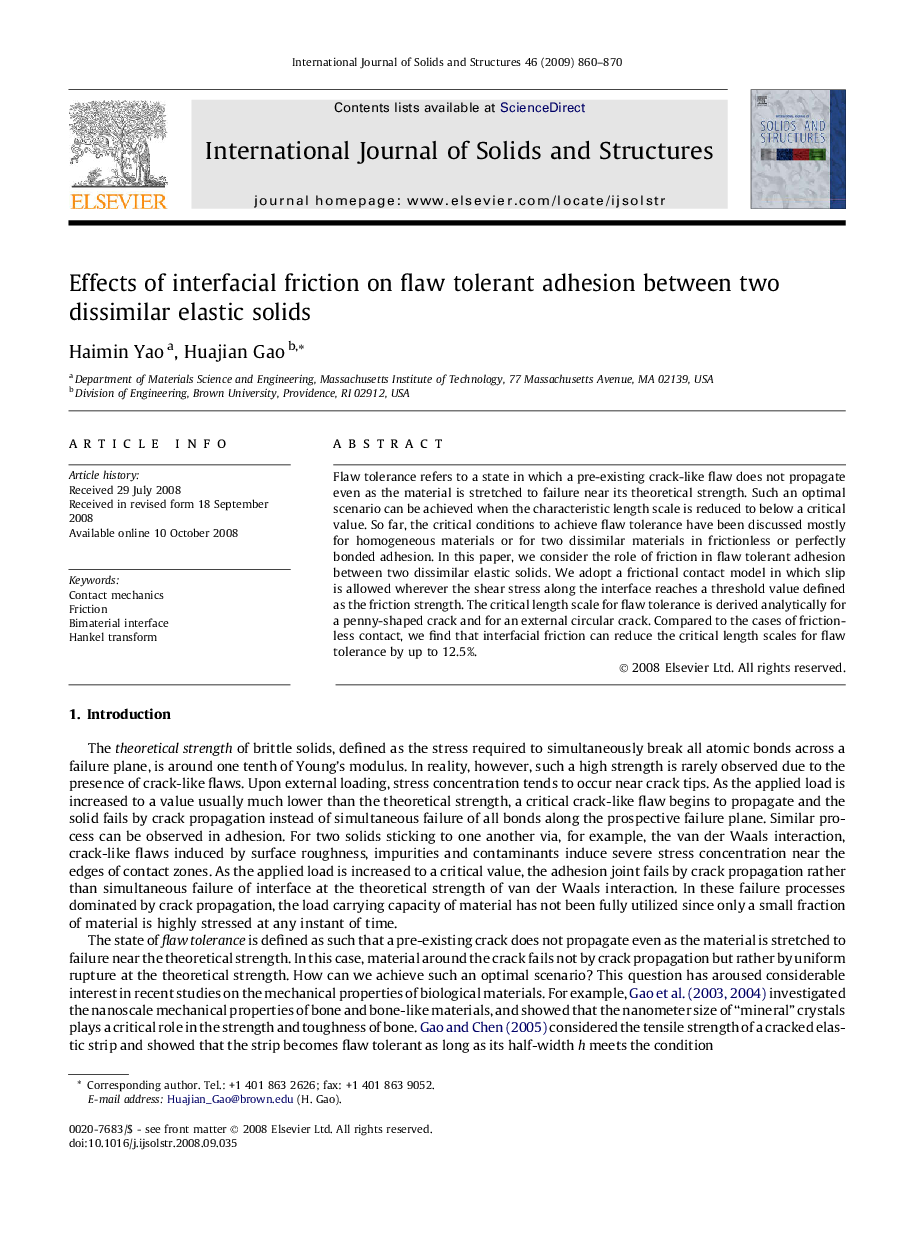| Article ID | Journal | Published Year | Pages | File Type |
|---|---|---|---|---|
| 279411 | International Journal of Solids and Structures | 2009 | 11 Pages |
Flaw tolerance refers to a state in which a pre-existing crack-like flaw does not propagate even as the material is stretched to failure near its theoretical strength. Such an optimal scenario can be achieved when the characteristic length scale is reduced to below a critical value. So far, the critical conditions to achieve flaw tolerance have been discussed mostly for homogeneous materials or for two dissimilar materials in frictionless or perfectly bonded adhesion. In this paper, we consider the role of friction in flaw tolerant adhesion between two dissimilar elastic solids. We adopt a frictional contact model in which slip is allowed wherever the shear stress along the interface reaches a threshold value defined as the friction strength. The critical length scale for flaw tolerance is derived analytically for a penny-shaped crack and for an external circular crack. Compared to the cases of frictionless contact, we find that interfacial friction can reduce the critical length scales for flaw tolerance by up to 12.5%.
